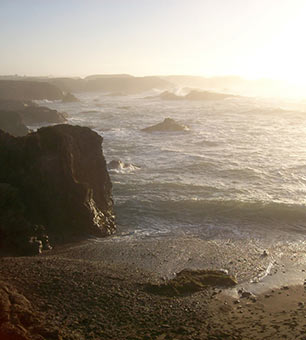Environmentalists are asking the Environmental Protection Agency (EPA) to ban the dumping of fracking fluids from oil platforms in federal waters off the California coast.
The Center for Biological Diversity filed a petition with the EPA this week asking the agency to revoke or modify a newly revised permit that allows oil producers off the coast of California to dump an estimated 9 billion gallons of wastewater into the ocean annually, including chemical-laced waste fluids from hydraulic fracturing, or “fracking” operations.
“It’s disgusting that oil companies dump wastewater into California’s ocean,” said Miyoko Sakashita, the group’s oceans director. “You can see the rigs from shore, but the contaminated waters are hidden from view. Our goal is to make sure toxic fracking chemicals don’t poison wildlife or end up in the food chain.”
In response to growing public concern over offshore fracking, the EPA issued a new rule in January requiring oil platforms in federally regulated waters off the coast of California to report the volume and chemical content of any fracking fluids and wastewater they dump into the ocean.
The EPA reserved the right to modify the pollution permit if the data reported by the industry indicates that fracking waste harms the marine environment.
The permit currently allows oil producers to dump unlimited amounts of fracking fluids mixed with other wastewater into federal waters where the EPA has jurisdiction, according to the Center for Biological Diversity’s petition.
Environmentalists see the EPA’s new reporting requirement as a small step in the right direction but argue that fracking fluids should not be dumped in the ocean at all.
Federal regulators have said that offshore fracking operations in the Pacific Ocean, which typically involve the forcing of water and chemicals into old oil wells to break up rock and release additional reserves, are rare and smaller in scale than the onshore operations that have sparked a nationwide controversy. Offshore fracking could become more widespread as oil firms seek to exploit the Monterey Shale, an oil-rich formation under much of California and the outer continental shelf.
At least 13 of the 23 oil platforms regulated by the EPA in Southern California dump wastewater off the coast. About half of the platforms in the Santa Barbara Channel, where a sensitive marine wildlife sanctuary provides habitat for endangered blue whales and sea turtles, dump some or all of their wastewater into the ocean, according to the Center for Biological Diversity.
A review by the center found that at least one-third of the chemicals used in 12 offshore frack jobs in state waters were suspected ecological hazards and one-third of those chemicals are suspected of affecting human developmental and nervous systems.
The group drew on data voluntarily reported by oil companies operating in state waters within three miles of the coast, where fracking has been more common and wastewater dumping is prohibited.
Little is currently known about the fracking fluids dumped in federally regulated waters, but the new EPA reporting rule could shed some light on the chemical cocktails used to produce oil offshore.
In a meeting earlier this month, staffers for the powerful California Coastal Commission said the EPA’s reporting requirement is an “important first step” but not adequate to ensure consistency with the California Coastal Act, which gives the commission authority to protect the coastline. Staffers recommended that the commission seek to review fracking wastewater dumping on a case-by-case basis.
The public – and even some federal regulators charged with overseeing offshore oil production – knew little about offshore fracking until last summer, when a Truthout investigation revealed that offshore oil producers had employed fracking technology in federal waters off the California coast at least 12 times in recent years. Truthout then confirmed that federal regulators green-lighted four more frack jobs in 2013 as environmental groups vowed to challenge the practice. The Associated Press published similar reports after Truthout broke the news.
The revelations alarmed state lawmakers and sparked investigations by environmental groups and the California Coastal Commission as the public demanded to know more about offshore fracking.
Our most important fundraising appeal of the year
December is the most critical time of year for Truthout, because our nonprofit news is funded almost entirely by individual donations from readers like you. So before you navigate away, we ask that you take just a second to support Truthout with a tax-deductible donation.
This year is a little different. We are up against a far-reaching, wide-scale attack on press freedom coming from the Trump administration. 2025 was a year of frightening censorship, news industry corporate consolidation, and worsening financial conditions for progressive nonprofits across the board.
We can only resist Trump’s agenda by cultivating a strong base of support. The right-wing mediasphere is funded comfortably by billionaire owners and venture capitalist philanthropists. At Truthout, we have you.
We’ve set an ambitious target for our year-end campaign — a goal of $250,000 to keep up our fight against authoritarianism in 2026. Please take a meaningful action in this fight: make a one-time or monthly donation to Truthout before December 31. If you have the means, please dig deep.
